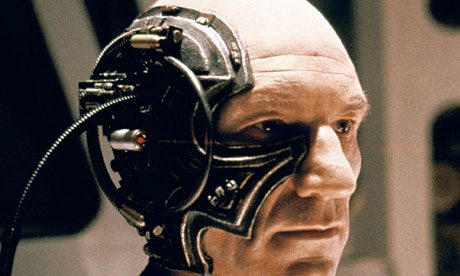Apple eclipsed Intel on the opening day of IDF (Intel Developer Forum), announcing iPhone6, AppleWatch, and Apple’s mobile payment. Intel’s nerdy executives, this year, boasted Core™ M CPU. Most in the audience cannot hide the boredom. We knew that fancier gadgets will come. Blah, blah, blah.
Intel has been, obviously, shifting attention away from traditional computation, such as servers and laptops. Their focus is now on tablets and more on wearables.

It began with Newton, Apple’s famed pen computer, followed by Palm Pilot, the product that defined the PDA categories. When MP3 players and smart phones gradually converged, consumers saw the general trend of all cool things becoming one device and encouraged it. There is only one question left: where do they carry that device? It turned out there are simply 3 places to wear gadgets: clipped on the belt, worn on the head, or strapped on the wrist. There are three fundamental technological problems: sensors, battery, display, and networking.
There is a plethora of sensors and more from people’s imagination. There are also the Minority Report style universal retina readers for identification. My personal favorite is the concept of statistical authentication: if we gather sufficient identifiable devices on a person, the statistic of a positive identification will reach the point of acceptable risks. For example, if a person carries my cell phone, wear my eye glasses, and has three of my credit cards. I could accept the risk of charging the gasoline fill-up without further proof. If the person also has a pace-maker that was implanted into my body, then I will accept the risk of him knowing my bank balance.
For a device small enough to wear, there isn’t enough battery for it to last very long. Technologists have been working on this problem and made big progress. The devices now consume much less electricity, the batteries now last longer, and the charging of the batteries has become easier. I can see the day that batteries get charged from ambient energies: motion, temperature variation, background radiation, etc. People will simply go about every day not even thinking of their batteries.
The display is a big problem. We consumers want it big, bright, and high-definition. But we also want it small and convenient. Projection technology (like Google glasses) seems like the ideal solution. But this is the holy grail of computer graphics people. For many decades now, they couldn’t come up with anything that does not make you look like a Borg and satisfy your display needs. I have my fantasies on this area and will share with you later.
The last is the networking. People now expect the devices to be, wirelessly, connected nearly all the time, either by cell technologies (LTE) or WiFi. They also want devices to interact with each other. At this moment, this still require a small “brick.” All “smart watches” tether to a cell phone nearby, typically via BlueTooth technology. Those watches become dumb (basically can only tell time) when their mothership cell phone is too far away.
This leaves the final frontier to discuss: fashion and style. When my daughter was getting married, I received the order to get rid of my perfectly functional digital watch and get a dress watch instead. The world does not go by utility alone. Style is important. It is also very expensive. And that’s a good thing.
This pundit predicts the loss of display and sound on cell phones. Instead, all cell phones come with two separately carried devices: a strap-on display on the wrist and a speaker/microphone to clip on the lapel or hung on the ear. The cell phone today will become a little piece of non-descript pack got stuck somewhere in the brief case.
Good luck finding it when you forgot where you put it.
